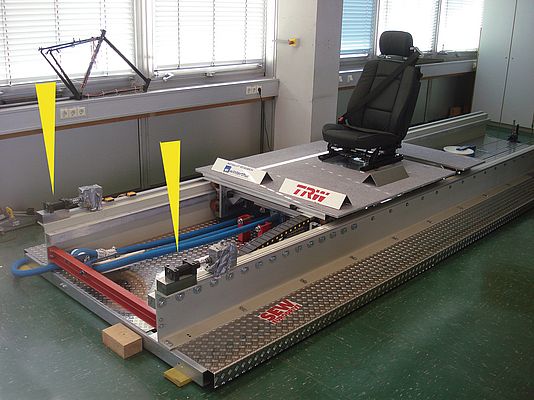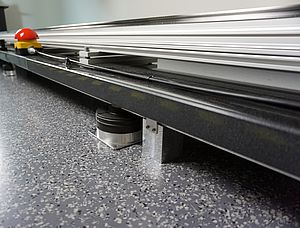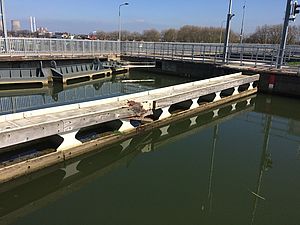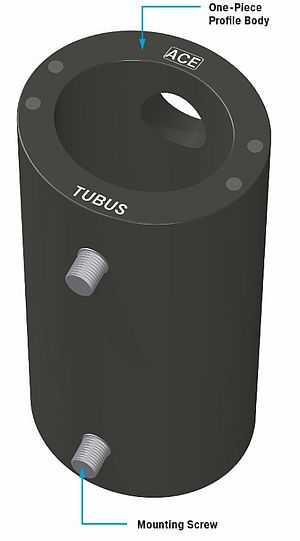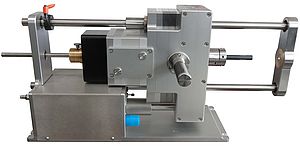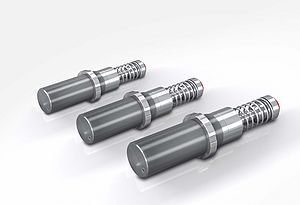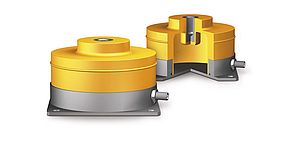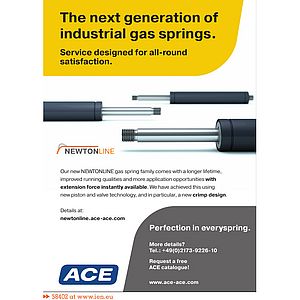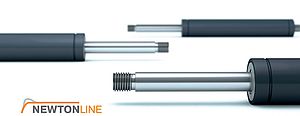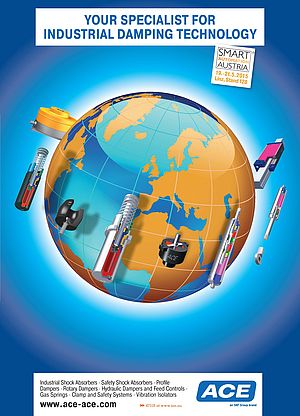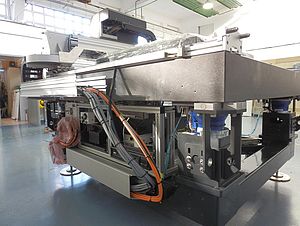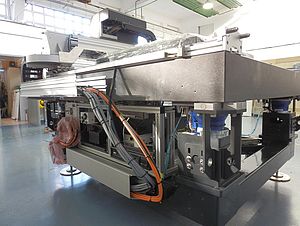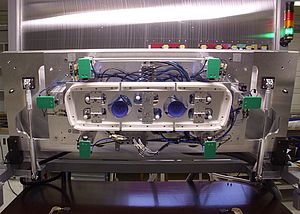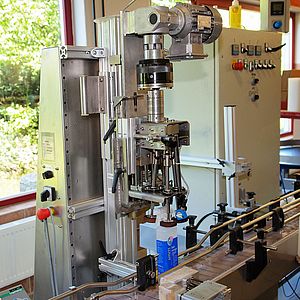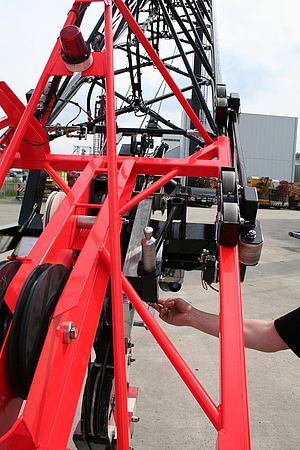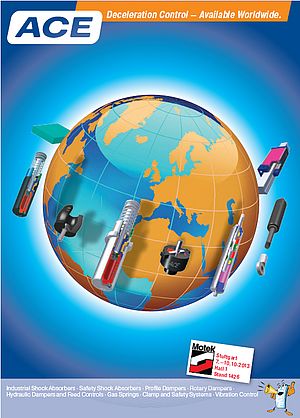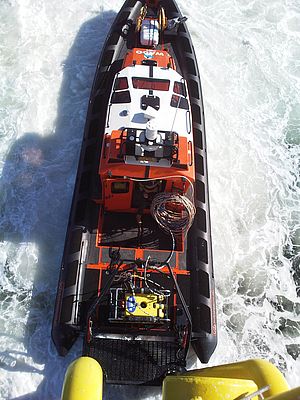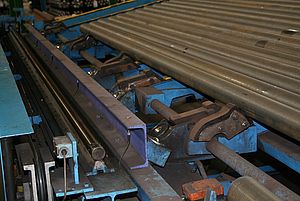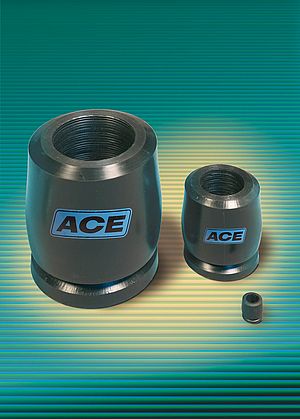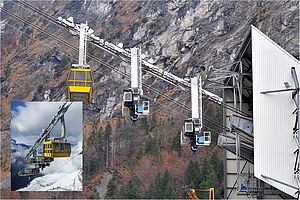Before vehicles are considered ready for series production, they have to undergo a large number of safety tests, which are normally associated with crash test dummies and demolished chassis. The technically impressive crash simulators are less expensive - and just as much part of development activities prior to series. A project carried out at the laboratory for measuring technology and sensors at Hochschule Konstanz shows that high-quality industrial shock absorbers can be integrated into the design to protect a test assembly.
Depending on the design, a crash test dummy will cost between EUR 100,000 and 250,000. While these practical assistants can be used repeatedly for automotive development purposes (albeit with elaborate maintenance) - unlike the destroyed cars on or in which they are sitting - manufacturers are nevertheless happy if their use and also the use of the vehicles can be minimised. It is also certain that no one will want to do away with these "stuntmen" that are available in a variety of different weight classes, in order to simulate the effects of crashes on the head, spine, legs or other parts of the human body. At the same time, research and industry are working together to find methods and processes to achieve an even more cost-effective design of preliminary testing situations. Many of these are well suited to measure the forces that occur, and hence forecast the demands that will be placed on the safety elements. This is also where a crash simulator developed by Prof. Dr.-Ing. Klaus Durst as part of a project with mechanical engineering students at the laboratory for measuring technology and sensors of Hochschule Konstanz für Technik, Wirtschaft und Gestaltung comes in. Given the focus on real situations, students Janek Stahl and Sandro Folisi were asked to implement the key steps of the project as they would occur in a real commercial setting, including the preparation of a safety concept during the test phase, as well as the design and development of a damper system for the test sled, the development of a user-friendly user program for gathering measurement data and handling the simulator, and the creation of an image film and publicity-oriented utilisation of the project. The latter was done with the help of industry, based on appearances at events such as trade fairs, as well as press releases.
Reproducibility of results
The basic design of the crash simulator has been kept simple and efficient: An electrical actuator accelerates a 400 kg test sled over a few metres. The sled is then decoupled and moves to the end position at a speed of 3.3 m/s. To ensure that the forces created by the accelerated masses do not lead to serious damages in the end positions of the entire design, or in the laboratory, the project team knew that it would have to rely on the assistance of high-quality brake solutions.
Prof. Dr.-Ing. Durst is already very familiar with ACE Stoßdämpfer GmbH from visits to trade fairs and the company's extensive catalogue. Therefore he was quite open to Sandro Folisi contacting the company from Langenfeld. ACE was immediately willing to support the project as a sponsor. For initial testing purposes, two industrial shock absorbers (MAGNUM MA4575M model) were installed in the end positions of the test sled on the left and right hand side (Image 1). These adjustable models with threads M45x1.5 and 75 mm stroke from the company's series, which has been considered a reference class for industrial shock absorbers for many years, were well equipped to handle their assigned task. Nevertheless, to ensure even better resistance against the kinetic energies of 2,178 Nm per stroke that occur in real-life situations, the entire team decided on an even more elaborately sized brake system and the corresponding changes to the design. Following the integration of a cross bar which supports the entire test assembly, the largest series MAGNUM model by the name of MA64150M was placed in the centre of the test assembly. This particular shock absorber is even larger than the company's previously used adjustable powerhouses. With a thread of M64x2 and a stroke of 150 mm, it not only meets the minimum requirements, but could also have been used where effective masses are subsequently increased. Thanks to state-of-the-art damper technology, it is able to produce almost triple the required energy absorption at 6,120 Nm per stroke of maximum energy absorption. State-of-the-art damper technology, a hardened guide bearing and the integrated fixed stop make it possible to absorb effective masses of 300 kg to a maximum to 80,000 kg. Such a high level of energy absorption paired with compact installation dimensions also open up new perspectives for designers with regard to damper size and utilisation of equipment performance.
More energy absorption with lower costs
Industrial shock absorbers of the MAGNUM series can also be used where other damper solutions and conventional shock absorbers can no longer be applied. The MAGNUM models with thread sizes M33, M45 and M64 have been successfully introduced into a number of markets since 1999. The combination of guidance bearings which are resistant to wear and tear, hardened piston rings, pot-shaped pressure sleeves, larger pistons and a novel membrane accumulator has remained innovative to this day, and has since proven itself hundreds of thousands of times in all types of designs. The unique feature of this series as compared to its ACE predecessor - or many competitive models - is that the complete redesign allows energy absorption levels to be increased by up to 50% with the same manufactured size. This means that the range of effective mass can also be increased by up to 200%, resulting in excellent potential opportunities regarding damper size and utilisation of equipment performance.
To provide users with a variety of options for design and installation purposes, the adjustable dampers shown for this scenario can be adjusted from both sides. The result - much better access to shock absorbers. The continuous thread and simple design of the newly developed accessory parts make it possible to install the damper in any position. For those in the know, this is still considered a sole positioning characteristic. Another decisive advantage - an excellent price-performance relationship, as the price of the damper per Nm decreases thanks to new techniques and the resulting competitive energy absorption by up to 30% compared to ACE predecessor models.
Whether for the automotive industry or for use in many other industries - this brake solution allows customers to achieve competitive advantages and benefit from new potential opportunities with regard to damper size and utilisation of equipment performance. Since the Langenfeld specialists for damper solutions of all kinds also provide extensive accessories which are well aligned to the respective task at hand with respect to the MAGNUM series, there are virtually no limits to the imagination of developers with regard to design and installation. They also contributed to the important insights for the development of safety systems for the automotive industry that were gained at the crash simulator at Konstanz. It remains to be seen whether we will be able to entirely do away with crash test dummies thanks to resourceful professors, students and designs as have been described here.


